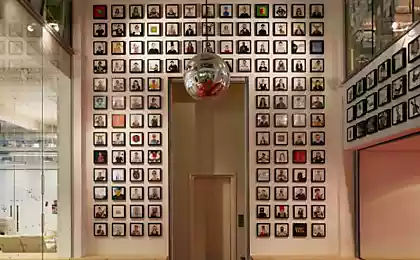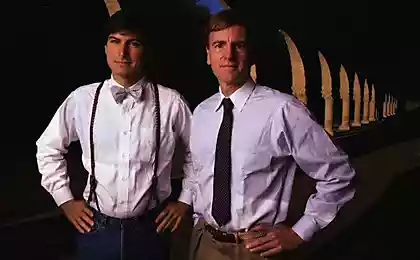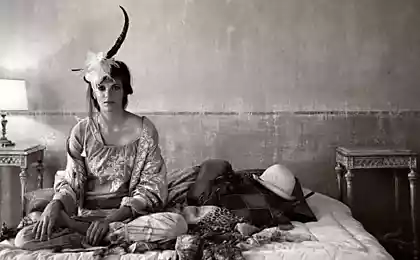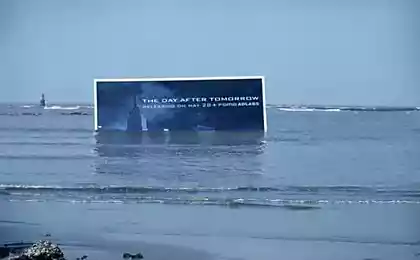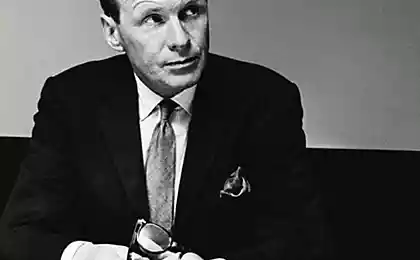923
Tricky Marketing (18 products)
Tricky marketing or how famous brands by trial and error, find the real reason for the purchase of goods and were able to convince their customers to buy more.
Reasons to Purchase - a big advertising secret. And despite the fact that the analysis of the motives and the constant search for the very insight, guided by which people prefer one or another brand, engaged and advertisers and agencies manage to find the right strategy strictly by experimentation.
Tefal
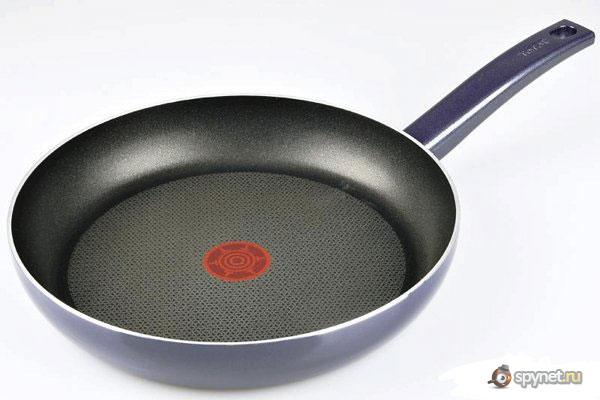
Tefal for a long time believed that the primary motivation for buying a Teflon-coated frying pans is that the preparation of these pans not require spending a single gram of oil. However, later it turned out that the main incentive for their purchase was the fact that with such a coating pan is very easy to clean, because the food does not stick to the surface. The contents of the campaign changed that significantly increased its effectiveness.
Snickers
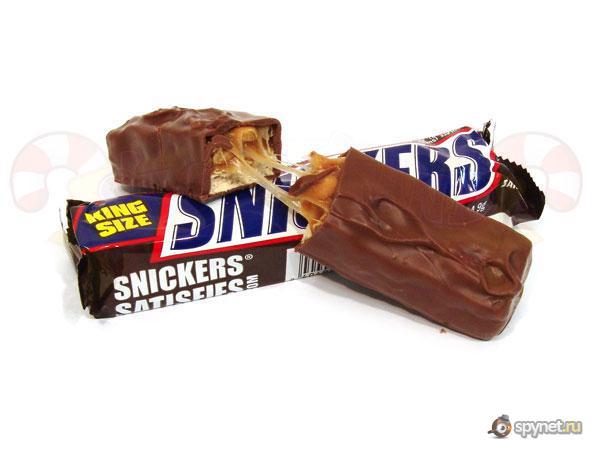
In Russia the first chocolate bars Snickers appeared in 1992 and positioned as a snack, which replaces a complete meal. Former Soviet consumers for a long time to get used to the fact that instead of soup for lunch, you can eat chocolate, Snickers and bought as a "sweet tea". After the service of the brand took over the creative agency BBDO Moscow, Snickers reposition for teenagers who for the most part like all sweet and do not like the soup.
Alka-Seltzer
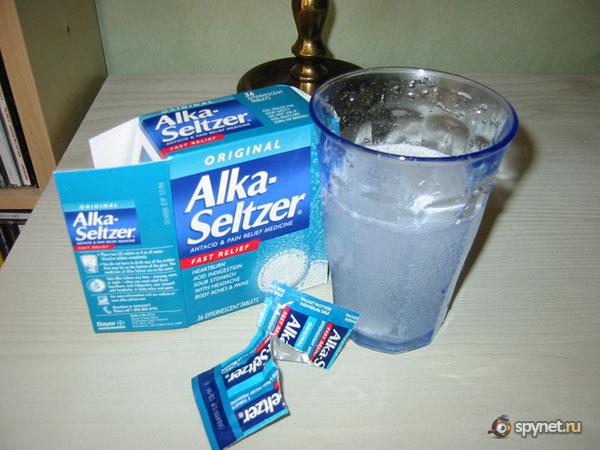
Once in the 1960s in advertising Alka-Seltzer threw a glass of water is not one, as before, but two tablets - drug sales grew exactly twice. The cunning publicity stunt invented agency Tinker & Partners.
There are similar stories about the brilliant marketer who first came up with instructions on how to use a shampoo that should be applied to the hair and wash off twice, which led to double-digit growth in sales.
Pepsi
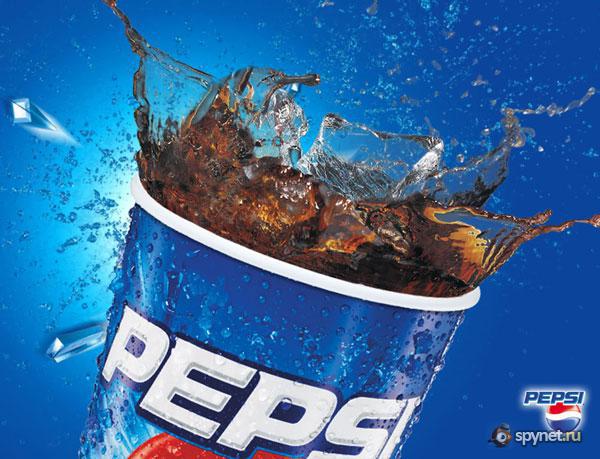
Pepsi in Russia, Nikita Khrushchev, first advertised. In 1959, at the American National Exhibition in Moscow in Sokolniki, the then US Vice President Richard Nixon, skillfully playing the role of host, Nikita Khrushchev offered a drink on the sample. The picture, in which the Soviet leader is holding a glass with the logo of Pepsi, delayed to come down from the pages of newspapers and advertising journals. One significant moment in the history of the brand is considered to be "Happy Birthday» Pepsi in Russia.
Timberland
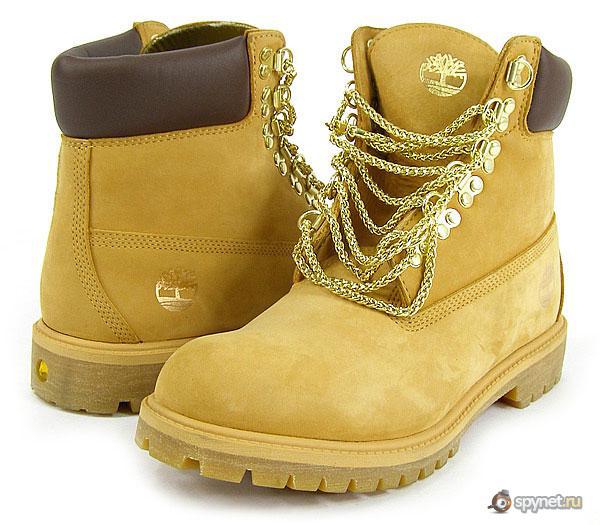
From the history of Timberland. In the early 1980s the company Timberland going through hard times. It produces high quality pumps, the price of which was lower than the industry leader, the company Topsiders. It seemed a good product and the low price would have to work for them, but things went bad. Then, Timberland took a very simple solution: they raised their prices so that they are much superior to the prices offered Topsiders. Sales rose sharply. That confirms the accuracy of the statements of David Ogilvy, "The higher the price, the more desirable it becomes commodity in the eyes of the buyer».
Parliament
At the time, I went the same way tobacco brand Parliament. Initially, prices were below its main competitor Marlboro, and sales have been relatively modest, as they are faced with many competitors in the low price category in which they feature exclusive filter no one appreciated. Next year the brand left the market and went out again at a price higher than Marlboro, once got into a niche "premium" which is just different from all other filters came into the pore.
Woolworth
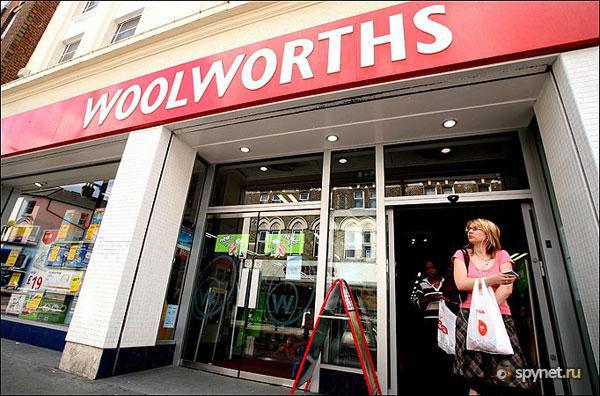
Founder of the biggest store chain Woolworth and inventor tsennnikov grocery and supermarkets found the right insight that allowed him to put together millions of fainting from fear. Shy and stammering young man from the village, aged 21, settled Assistant seller in small shop. While the price of goods in shops, placed on the counter of the seller was not specified. Seller "by eye" determined the solvency of the buyer, and called its price. Further, the buyer or traded or left. Poor Frank did not know how and was very afraid to entice buyers to praise the goods and haggle. So afraid that one day even fainted during service. As punishment, the store owner instructed him what to trade left alone all day, threatening that if the revenue is less than the normal day, he fired him.
Before opening the store Frank attached to all paper products with the minimum possible price (the prototype of the modern price tag). All unsold goods piled up in the warehouse, he put on a huge table with attachment plate with the inscription "All five cents." Table he placed near a window so that the goods, and the plate was visible from the street. And shaking with fear waited for customers by hiding behind the counter.
All merchandise was sold out in a few hours, and revenue per day was equal to a week. Buyers, second-hand goods in their hands and saw it written on the price without haggling gave money.
Frank retired from the owner, took the money and opened his own shop. In 1919, Woolworth empire consisted of thousands of shops, and a personal fortune of Frank was about 65 million.
Guinness World Records
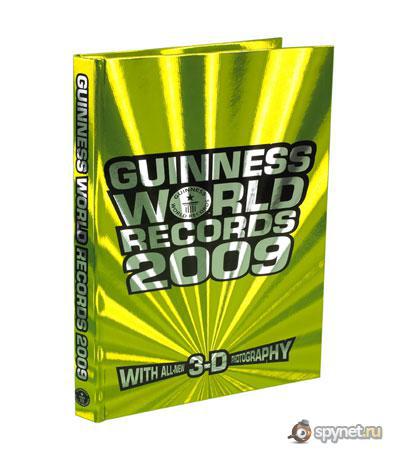
The famous and the best-selling (after the Bible) "Guinness World Records" is no more than a publicity stunt invented by Managing Director brewer Guinness, Sir Hugh Beaver. In 1954, at a dinner hosted by "Wexford" for hunters, Hugh Beaver started an argument with someone of the guests who fly faster - plover or the grouse. And then it dawned on Beaver and that across the globe during just such a small get-togethers over a beer unfolding real debate about "the most the most." He decided that he should create a book that will contain the records officially confirmed in all sorts of areas.
Year went to research, and August 27, 1955 the first 198-page book was ready. The success was stunning: even before Christmas it became a bestseller in the UK, bringing the beer brand a good income.
Dewar's
In London, at the end of the 19th century were very popular brandy, rum and gin. Therefore, to promote the whiskey was not easy. Tricky Thomas Dewar, one of the founders of the family brand, chose an unexpected strategy. He hired straw buyers who visited various pubs, requiring them to pour whiskey Dewar's. Naturally, it was absent in the sale, and they left. After several parishes Dewar himself he appeared at the bar and offered to sign a contract on the supply of whiskey.
In 1892, Thomas Dewar went on a world tour. For two years he visited 26 countries, and the company began to work 32 agents and has several export companies Dewar's. The turnover of the company during this period increased by 10 times. And Tommy Dewar wrote his famous book "A Walk Around the World».
Camel
One of America's first teaser ads tried tobacco brand Camel in 1913. Deciding that a camel is not only catchy bright picture, but also a great occasion for advertising innovations, experts tobacco company RJR for a few days before the first consignment of cigarettes on sale in the newspapers gave almost ninety American cities cryptic announcement. "Camels" - read the first one. A few displays the message "The camels are coming," and then - "Tomorrow the city will be more camels than in Asia and Africa together!" The next morning, frightened and intrigued Americans finally learned the truth. "Camel Cigarettes are here!", - Reads the final ads.
IKEA
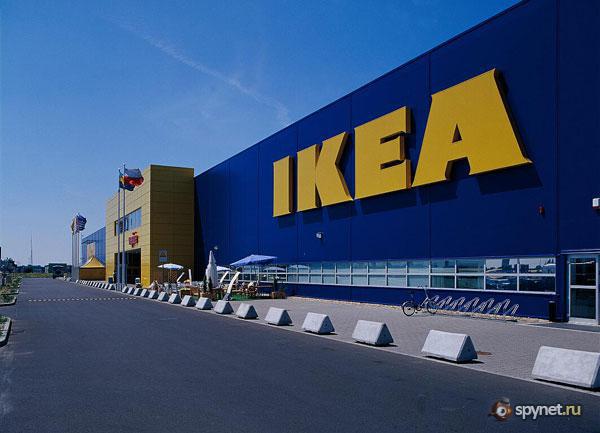
When the US opened the first stores IKEA, have already received recognition in Europe, sales of furniture does not justify any expectations. After the study found that while Americans and like the simplicity of the design, they wanted to match the furniture to larger size of their homes. All that needed to be done - to increase the size of the furniture.
Procter & Gamble

Lead chemical engineer company Procter & Gamble Victor Mills, helps his daughter to look after children, repeatedly had to pull out of their own grandchildren, wet diapers, wash and dry them. The process, of course, he did not like and wanted to somehow make their lives easier. Then I came up with the idea of a one-time "diapers" - folded napkin with a high absorption capacity, which is planned to be placed in a special form of briefs. After some experimentation with different materials Mills developed for P & G new product that began to produce under the brand Pampers, has become nominal.
Chupa Chups
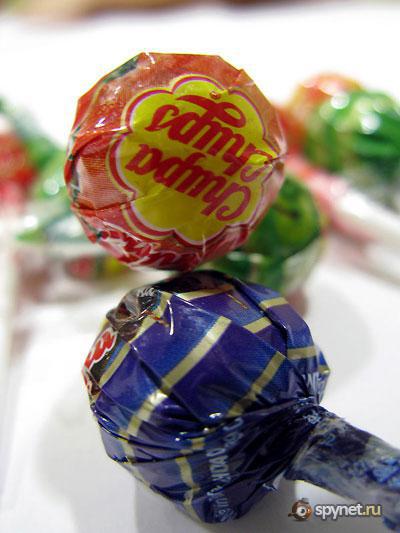
Usually all the children after they eat candy, become sticky hands and they, without hesitation, wipe them about clothes. Lollipop (originally wooden) which could suck, as if holding a fork and without dirtying clothes, invented in 1958 by Enrique Bernat. USP of the product was that it could suck without dirtying your clothes and hands. At the same time there was the first slogan Chupa Chups - «It's round and long-lasting» (~ It is round and long). Innovative wand appreciated consumers worldwide, 52nd year, continued to suck fruit candy.
Nestlé
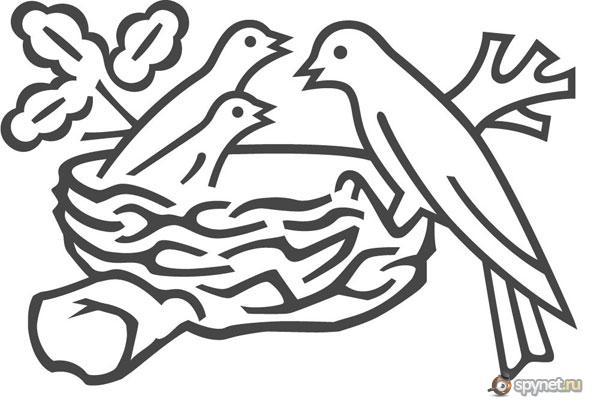
The original company logo Nestlé, founded in the 60s of the 19th century, was as follows: nest with three chicks and their mother. As a trademark for its first product, Henri Nestlé (Henri Nestlé) used a family coat of arms. At that time it was considered the traditional family, parents and three children. Later, towards the middle of the 20th century, the tradition changed. I changed and logo. Now in the nest, usually in Europe, only two chicks.
Marlboro
Marlboro brand appeared for the first time in 1924 and positioned itself as the first women's cigarettes. He was picked purely feminine slogan: «Mild as May» - «Tender like May». As the face of the brand was invited to Hollywood star Mae West. On the ladies' audience focused and packing: band filter with a red face a dual challenge: to hide sloppy trail of lipstick and white teeth protect women against yellowing. But no matter how tried advertising specialists, the goods were not enough attractive for women from cigarettes spoiled breath, yellowed teeth and there is a painful cough. Therefore, in order to survive on the market two decades later the brand had a sex change.
In order to change the image of cigarettes with filter, as a product "for girls", Philip Morris has invited one of the best American specialists on advertising - Leo Burnett, who came up with the image of "Cowboy - tamer prairie." Cowboy - the embodiment of the American spirit - touched a chord with consumers. Posters reminded of these heroes of America - brutal guys endearing wild steppe. They conquered all - men and women, blacks and Latinos. Marlboro sales in just one year increased so much that began to occupy the fourth position in the ranking of sales of all tobacco products.
In addition, Malrboro were produced in which later became the standard package «Flip-top» - pencil case made of hard cardboard with a hinged lid. This package was as a purely practical (not hesitated cigarettes) and marketing tremendous significance - now the smoker was necessary to demonstrate to others pack every time he was going to smoke, because the open «flip-top» was uncomfortable in the pocket.
De Beers
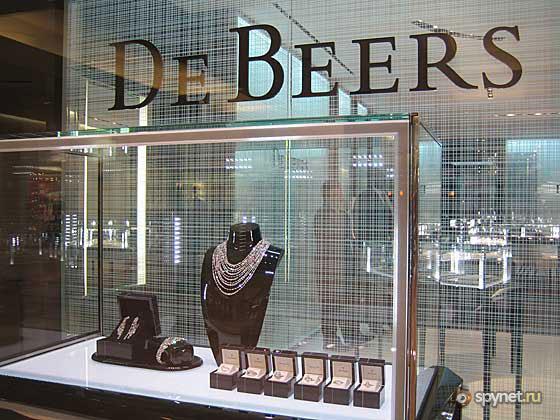
It is known that the consumer does not buy the goods, and the solution to their problem. Since the South African diamond company De Beers offered men the solution to all their problems with the opposite of the floor is built on this INSA genius advertising campaign.
In 1948, Harry Oppenheimer, head of De Beers, traveled to New York to meet with representatives of the advertising agency NW Ayers. He went there with the intention to change the way people thought about diamonds: it is necessary to make sure that this stone has ceased to be a trinket moneybags, whose customary and became a commodity, without which ordinary people could do. Posters depicting spectacular actresses with rings on the fingers and earrings replaced black and white posters with images of diamonds and the words "Relieves headaches since 1888," "Think about it. Divorce is expensive, "" No, your wife did not pay for this advertising (But she told us which newspaper you read) "and so on. So De Beers has proven that it is possible to sell the luxury women through their men.
Red Bull
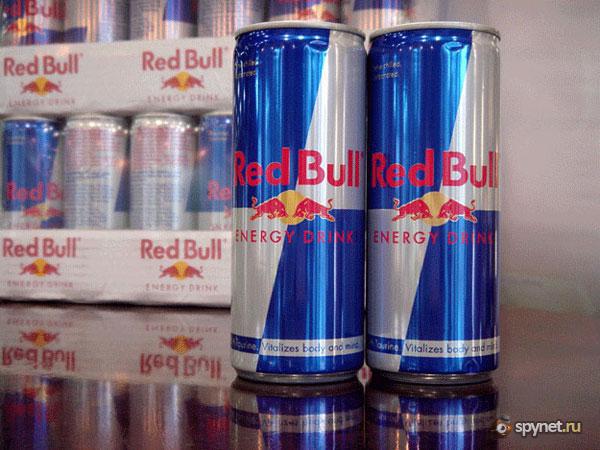
When the drink is taken out for a wider market (Europe, USA), the main competitors were and Coca-Cola, and Pepsi, and Molson, and Labatt, and Anheuser-Busch. The concept was similar at all - they are energizing and stimulating and Energy Jolt Cola contained among other things, also doubled, compared to Red Bull, caffeine.
Then Dietrich Mateschitz has gone on a risky step: to artificially inflate the price in half compared to the competition, reduced the amount of packaging, reminiscent of the battery, and began to place banks in departments stores do not drink, and any other (note that once just go to the store - Red Bull cans together with other power companies can be found almost in the sausage department, including in alcoholic).
In addition, Red Bull boxes were distributed free to students on college campuses. On student revels Red Bull went with a bang, as randomly and happy coincidence quickly discovered that he was ideally placed to vodku.Tak were born new, become a very popular cocktail Vodka Red Bull.
Ariel
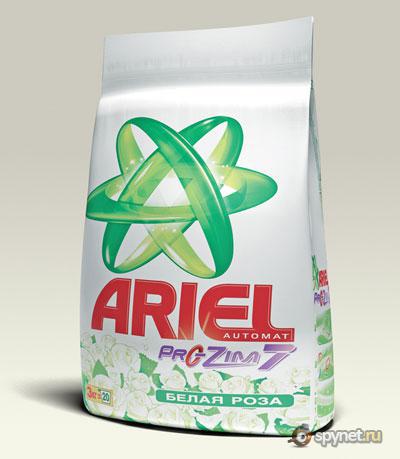
Rumor has it that the so-called casual fridays, when it is possible to depart from the strict dress code, adopted in large companies and official costume change for casual clothes, came up with P & G promotional purposes. In the 80 years of the 20th century, the world's largest company P & G has been a leader in the market of detergents in the United States. But, despite the high advertising activity, market share did not want to grow. Then the company conducted a study to assess the market and garment care. The percentage revealed that the powder is used in 65% of cases, and dry cleaning - 35%. Further, the company found that 70% of consumers of detergent are employed and 5 out of 7 days a week, go to the suits that they give to the dry cleaners.
Furthermore, joint research P & G and Levi Strauss Jeans showed that employees in casual clothes creativity and work much more effectively those who wear suits. And what did they do? P & G within the company introduces the right to go on Friday in everyday clothes. The news forces the two companies received huge coverage in the press, and many corporations have followed suit. Market detergents grew by 20%.
Reasons to Purchase - a big advertising secret. And despite the fact that the analysis of the motives and the constant search for the very insight, guided by which people prefer one or another brand, engaged and advertisers and agencies manage to find the right strategy strictly by experimentation.
Tefal

Tefal for a long time believed that the primary motivation for buying a Teflon-coated frying pans is that the preparation of these pans not require spending a single gram of oil. However, later it turned out that the main incentive for their purchase was the fact that with such a coating pan is very easy to clean, because the food does not stick to the surface. The contents of the campaign changed that significantly increased its effectiveness.
Snickers

In Russia the first chocolate bars Snickers appeared in 1992 and positioned as a snack, which replaces a complete meal. Former Soviet consumers for a long time to get used to the fact that instead of soup for lunch, you can eat chocolate, Snickers and bought as a "sweet tea". After the service of the brand took over the creative agency BBDO Moscow, Snickers reposition for teenagers who for the most part like all sweet and do not like the soup.
Alka-Seltzer

Once in the 1960s in advertising Alka-Seltzer threw a glass of water is not one, as before, but two tablets - drug sales grew exactly twice. The cunning publicity stunt invented agency Tinker & Partners.
There are similar stories about the brilliant marketer who first came up with instructions on how to use a shampoo that should be applied to the hair and wash off twice, which led to double-digit growth in sales.
Pepsi

Pepsi in Russia, Nikita Khrushchev, first advertised. In 1959, at the American National Exhibition in Moscow in Sokolniki, the then US Vice President Richard Nixon, skillfully playing the role of host, Nikita Khrushchev offered a drink on the sample. The picture, in which the Soviet leader is holding a glass with the logo of Pepsi, delayed to come down from the pages of newspapers and advertising journals. One significant moment in the history of the brand is considered to be "Happy Birthday» Pepsi in Russia.
Timberland

From the history of Timberland. In the early 1980s the company Timberland going through hard times. It produces high quality pumps, the price of which was lower than the industry leader, the company Topsiders. It seemed a good product and the low price would have to work for them, but things went bad. Then, Timberland took a very simple solution: they raised their prices so that they are much superior to the prices offered Topsiders. Sales rose sharply. That confirms the accuracy of the statements of David Ogilvy, "The higher the price, the more desirable it becomes commodity in the eyes of the buyer».
Parliament
At the time, I went the same way tobacco brand Parliament. Initially, prices were below its main competitor Marlboro, and sales have been relatively modest, as they are faced with many competitors in the low price category in which they feature exclusive filter no one appreciated. Next year the brand left the market and went out again at a price higher than Marlboro, once got into a niche "premium" which is just different from all other filters came into the pore.
Woolworth

Founder of the biggest store chain Woolworth and inventor tsennnikov grocery and supermarkets found the right insight that allowed him to put together millions of fainting from fear. Shy and stammering young man from the village, aged 21, settled Assistant seller in small shop. While the price of goods in shops, placed on the counter of the seller was not specified. Seller "by eye" determined the solvency of the buyer, and called its price. Further, the buyer or traded or left. Poor Frank did not know how and was very afraid to entice buyers to praise the goods and haggle. So afraid that one day even fainted during service. As punishment, the store owner instructed him what to trade left alone all day, threatening that if the revenue is less than the normal day, he fired him.
Before opening the store Frank attached to all paper products with the minimum possible price (the prototype of the modern price tag). All unsold goods piled up in the warehouse, he put on a huge table with attachment plate with the inscription "All five cents." Table he placed near a window so that the goods, and the plate was visible from the street. And shaking with fear waited for customers by hiding behind the counter.
All merchandise was sold out in a few hours, and revenue per day was equal to a week. Buyers, second-hand goods in their hands and saw it written on the price without haggling gave money.
Frank retired from the owner, took the money and opened his own shop. In 1919, Woolworth empire consisted of thousands of shops, and a personal fortune of Frank was about 65 million.
Guinness World Records

The famous and the best-selling (after the Bible) "Guinness World Records" is no more than a publicity stunt invented by Managing Director brewer Guinness, Sir Hugh Beaver. In 1954, at a dinner hosted by "Wexford" for hunters, Hugh Beaver started an argument with someone of the guests who fly faster - plover or the grouse. And then it dawned on Beaver and that across the globe during just such a small get-togethers over a beer unfolding real debate about "the most the most." He decided that he should create a book that will contain the records officially confirmed in all sorts of areas.
Year went to research, and August 27, 1955 the first 198-page book was ready. The success was stunning: even before Christmas it became a bestseller in the UK, bringing the beer brand a good income.
Dewar's
In London, at the end of the 19th century were very popular brandy, rum and gin. Therefore, to promote the whiskey was not easy. Tricky Thomas Dewar, one of the founders of the family brand, chose an unexpected strategy. He hired straw buyers who visited various pubs, requiring them to pour whiskey Dewar's. Naturally, it was absent in the sale, and they left. After several parishes Dewar himself he appeared at the bar and offered to sign a contract on the supply of whiskey.
In 1892, Thomas Dewar went on a world tour. For two years he visited 26 countries, and the company began to work 32 agents and has several export companies Dewar's. The turnover of the company during this period increased by 10 times. And Tommy Dewar wrote his famous book "A Walk Around the World».
Camel
One of America's first teaser ads tried tobacco brand Camel in 1913. Deciding that a camel is not only catchy bright picture, but also a great occasion for advertising innovations, experts tobacco company RJR for a few days before the first consignment of cigarettes on sale in the newspapers gave almost ninety American cities cryptic announcement. "Camels" - read the first one. A few displays the message "The camels are coming," and then - "Tomorrow the city will be more camels than in Asia and Africa together!" The next morning, frightened and intrigued Americans finally learned the truth. "Camel Cigarettes are here!", - Reads the final ads.
IKEA

When the US opened the first stores IKEA, have already received recognition in Europe, sales of furniture does not justify any expectations. After the study found that while Americans and like the simplicity of the design, they wanted to match the furniture to larger size of their homes. All that needed to be done - to increase the size of the furniture.
Procter & Gamble

Lead chemical engineer company Procter & Gamble Victor Mills, helps his daughter to look after children, repeatedly had to pull out of their own grandchildren, wet diapers, wash and dry them. The process, of course, he did not like and wanted to somehow make their lives easier. Then I came up with the idea of a one-time "diapers" - folded napkin with a high absorption capacity, which is planned to be placed in a special form of briefs. After some experimentation with different materials Mills developed for P & G new product that began to produce under the brand Pampers, has become nominal.
Chupa Chups

Usually all the children after they eat candy, become sticky hands and they, without hesitation, wipe them about clothes. Lollipop (originally wooden) which could suck, as if holding a fork and without dirtying clothes, invented in 1958 by Enrique Bernat. USP of the product was that it could suck without dirtying your clothes and hands. At the same time there was the first slogan Chupa Chups - «It's round and long-lasting» (~ It is round and long). Innovative wand appreciated consumers worldwide, 52nd year, continued to suck fruit candy.
Nestlé

The original company logo Nestlé, founded in the 60s of the 19th century, was as follows: nest with three chicks and their mother. As a trademark for its first product, Henri Nestlé (Henri Nestlé) used a family coat of arms. At that time it was considered the traditional family, parents and three children. Later, towards the middle of the 20th century, the tradition changed. I changed and logo. Now in the nest, usually in Europe, only two chicks.
Marlboro
Marlboro brand appeared for the first time in 1924 and positioned itself as the first women's cigarettes. He was picked purely feminine slogan: «Mild as May» - «Tender like May». As the face of the brand was invited to Hollywood star Mae West. On the ladies' audience focused and packing: band filter with a red face a dual challenge: to hide sloppy trail of lipstick and white teeth protect women against yellowing. But no matter how tried advertising specialists, the goods were not enough attractive for women from cigarettes spoiled breath, yellowed teeth and there is a painful cough. Therefore, in order to survive on the market two decades later the brand had a sex change.
In order to change the image of cigarettes with filter, as a product "for girls", Philip Morris has invited one of the best American specialists on advertising - Leo Burnett, who came up with the image of "Cowboy - tamer prairie." Cowboy - the embodiment of the American spirit - touched a chord with consumers. Posters reminded of these heroes of America - brutal guys endearing wild steppe. They conquered all - men and women, blacks and Latinos. Marlboro sales in just one year increased so much that began to occupy the fourth position in the ranking of sales of all tobacco products.
In addition, Malrboro were produced in which later became the standard package «Flip-top» - pencil case made of hard cardboard with a hinged lid. This package was as a purely practical (not hesitated cigarettes) and marketing tremendous significance - now the smoker was necessary to demonstrate to others pack every time he was going to smoke, because the open «flip-top» was uncomfortable in the pocket.
De Beers

It is known that the consumer does not buy the goods, and the solution to their problem. Since the South African diamond company De Beers offered men the solution to all their problems with the opposite of the floor is built on this INSA genius advertising campaign.
In 1948, Harry Oppenheimer, head of De Beers, traveled to New York to meet with representatives of the advertising agency NW Ayers. He went there with the intention to change the way people thought about diamonds: it is necessary to make sure that this stone has ceased to be a trinket moneybags, whose customary and became a commodity, without which ordinary people could do. Posters depicting spectacular actresses with rings on the fingers and earrings replaced black and white posters with images of diamonds and the words "Relieves headaches since 1888," "Think about it. Divorce is expensive, "" No, your wife did not pay for this advertising (But she told us which newspaper you read) "and so on. So De Beers has proven that it is possible to sell the luxury women through their men.
Red Bull

When the drink is taken out for a wider market (Europe, USA), the main competitors were and Coca-Cola, and Pepsi, and Molson, and Labatt, and Anheuser-Busch. The concept was similar at all - they are energizing and stimulating and Energy Jolt Cola contained among other things, also doubled, compared to Red Bull, caffeine.
Then Dietrich Mateschitz has gone on a risky step: to artificially inflate the price in half compared to the competition, reduced the amount of packaging, reminiscent of the battery, and began to place banks in departments stores do not drink, and any other (note that once just go to the store - Red Bull cans together with other power companies can be found almost in the sausage department, including in alcoholic).
In addition, Red Bull boxes were distributed free to students on college campuses. On student revels Red Bull went with a bang, as randomly and happy coincidence quickly discovered that he was ideally placed to vodku.Tak were born new, become a very popular cocktail Vodka Red Bull.
Ariel

Rumor has it that the so-called casual fridays, when it is possible to depart from the strict dress code, adopted in large companies and official costume change for casual clothes, came up with P & G promotional purposes. In the 80 years of the 20th century, the world's largest company P & G has been a leader in the market of detergents in the United States. But, despite the high advertising activity, market share did not want to grow. Then the company conducted a study to assess the market and garment care. The percentage revealed that the powder is used in 65% of cases, and dry cleaning - 35%. Further, the company found that 70% of consumers of detergent are employed and 5 out of 7 days a week, go to the suits that they give to the dry cleaners.
Furthermore, joint research P & G and Levi Strauss Jeans showed that employees in casual clothes creativity and work much more effectively those who wear suits. And what did they do? P & G within the company introduces the right to go on Friday in everyday clothes. The news forces the two companies received huge coverage in the press, and many corporations have followed suit. Market detergents grew by 20%.






